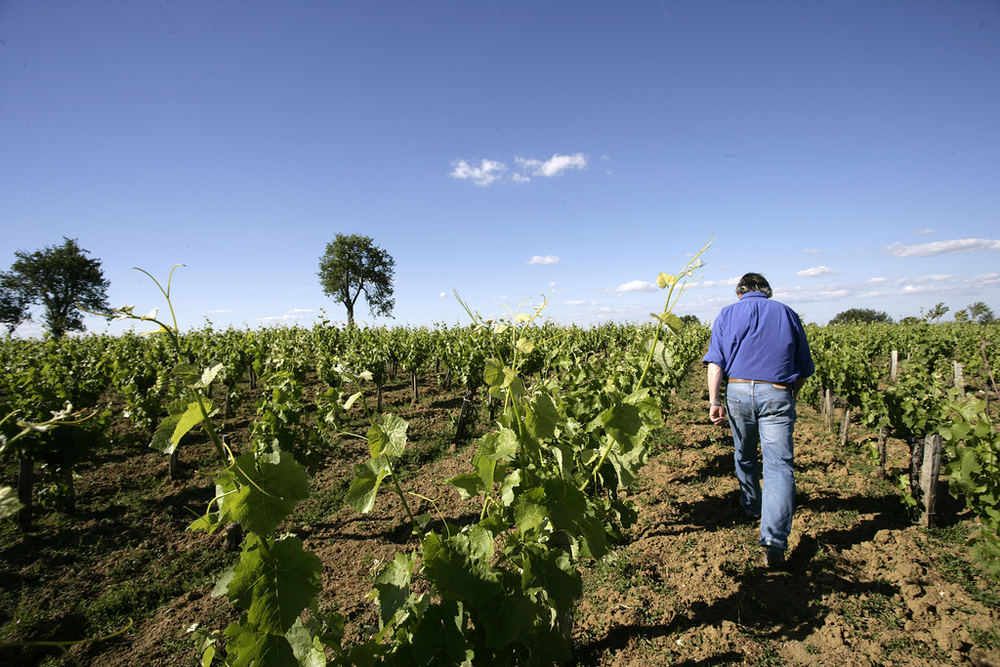Ancient, Tenacious Reds of South-West France
by JONATHAN KEMP
Article written for Chambers Street Wines, view it here

The South-west of France was once the supplier of wines to Roman Emperors, the Gauls having planted vines as early as 600 B.C. by some accounts. These days, ancient sites and expressive, elegant wines fit for the ruling classes are selling at decidedly plebeian prices. Centuries past have unified this large area of otherwise unrelated towns, terroirs, and grape varieties in their common oppression by powerful interests in Bordeaux. The current revitalization of the South-west is being led by the growers who have staked their reputations on cultivating the indigenous grapes uniquely suited to their respective landscapes.
Braucol (Fer Servadou) is grown in Gaillac’s Tarn River Valley, where during the 1960s and 70s many vines were being replaced with grapes such as Cabernet Sauvignon and Merlot to follow perceived market demand. Robert Plageoles meanwhile began pushing back against this trend, researching and tracking down quickly disappearing plantings, among them Duras, Braucol, Mauzac, Ondenc, and the extremely rare Prunelart. Today Robert's (literally) groundbreaking work in replanting those rare vines is carried on by son Bernard and his wife Myriam. They farm organically and make ripe, pleasurable, natural wines from their rescued plantings.
Not far away from Domaine Plageoles, also north of the Tarn, is Scottish ex-pat Alan Geddes and his Parisienne wife Laurence of Domaine Mayragues, who spent 15 years restoring a 14th century chateau on a site evidently used to make wines in Roman times. Since 1999 they have farmed biodynamically, producing reds from Braucol, Duras, Syrah, and Cabernet Sauvignon that are remarkably elegant wines given the hotter climate, perfumed and lightly tannic.
Fronton, between the Tarn and the Garonne north of Toulouse, is known for nearly exclusive cultivation of Negrette , the 'black grape,' going back to the 12th century. Grown on the poor, sandy soils sloping down to the Tarn, Diane and Phillipe Cauvin of Chateau la Colombiere grow their Negrette following biodynamic principles on a mix of siliceous and sandy soils, blending it with Syrah, Cabernet Franc, and Cabernet Sauvignon for their Reserve bottling. These are easy, juicy, ripe wines but have complex aromatics and plenty of lift. They are also quite inexpensive.
The ‘black wine,’ however, is the purview of Cahors, where Cot (Malbec) thrives along with Tannat, on red soils with limestone rocks deposited by the Lot River. On a plateau on the edge of the appellation Gilles Bley of Clos Siguier makes a refreshingly bright, lively, and focused version of the 'black wine,' working organically and with native yeasts, low, if any, sulfur, and only small percentages of oak barrels - most of them in use for nearly a decade.
All of these wines represent immense values, many that are perfect for cassoulet, hearty stews, and other foods that help our warm winter-weary bones. Grab this opportunity to discover these reds that once stained the teeth of kings.
Check Chambers Street Wines for availability.